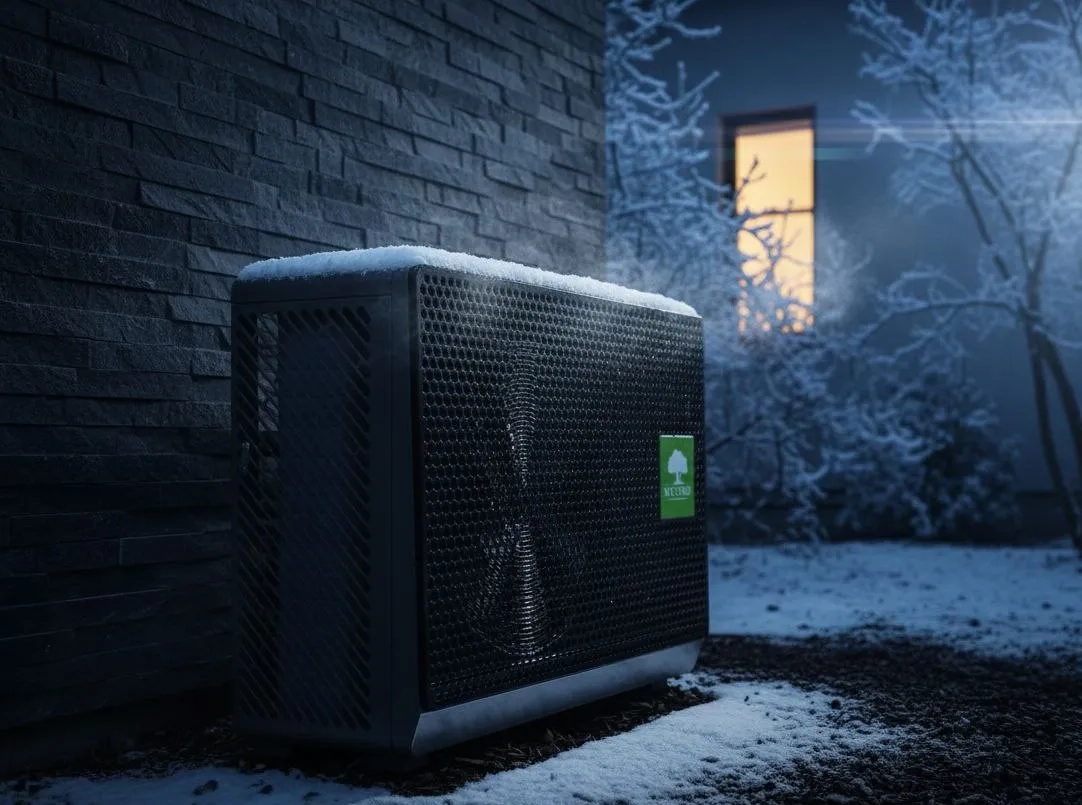
Why does a heat pump consume so much electricity in winter, and what can be done without changing the entire heating system? The answer lies in understanding the coefficient of performance and properly setting the supply temperature.
What is the COP (Coefficient of Performance)?
COP (Coefficient of Performance) is the efficiency of a heat pump that shows how many kilowatts of heat can be obtained from one kilowatt of electricity consumed. For example, COP 3.27 means that from 1 kW of electricity the heat pump produces 3.27 kW of thermal energy. With COP 1.73, from the same 1 kW of electricity we get only 1.73 kW of heat.
For an objective comparison of different operating modes of a heat pump, we use a standard measuring point — an outdoor air temperature of minus 7°C, which is a typical winter temperature for most European countries. This point best demonstrates the difference between low-temperature (W35) and high-temperature (W55) operating modes.
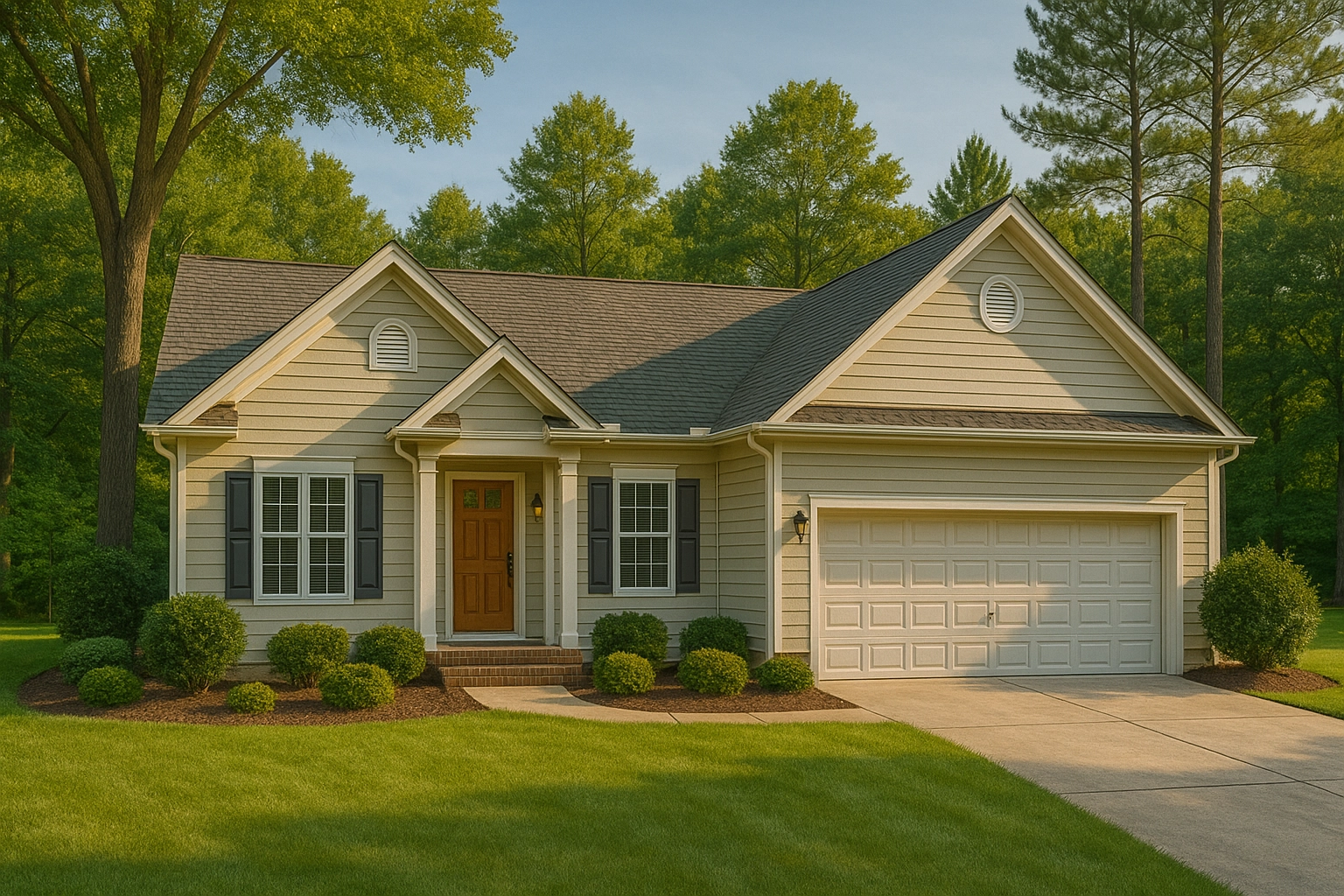
The real efficiency difference at -7°C
Official data from the performance charts of BeeSmart series heat pumps show a dramatic difference in efficiency at different supply temperatures. Below is a comparison of four MHCS models at an outdoor temperature of -7°C:
| Model | Heating capacity (kW) W35 | COP W35 | Consumption (kW) W35 | Heating capacity (kW) W55 | COP W55 | Consumption (kW) W55 | Consumption difference |
|---|---|---|---|---|---|---|---|
| MHCS 035 NBS | 5,70 | 2,97 | 1,92 | 4,88 | 1,73 | 2,82 | 1.47 times |
| MHCS 045 NBS | 7,65 | 3,10 | 2,47 | 6,52 | 1,74 | 3,75 | 1.52 times |
| MHCS 050 NBS | 10,57 | 3,27 | 3,23 | 8,37 | 1,81 | 4,62 | 1.43 times |
| MHCS 070 NBS | 12,57 | 3,12 | 4,03 | 10,68 | 1,93 | 5,53 | 1.37 times |
The data clearly show: in W55 mode (high-temperature heating), the BeeSmart heat pump consumes 1.4–1.5 times more electricity than in W35 mode (low-temperature heating) at the same outdoor temperature.
Energy efficiency in numbers: how much electricity a low-temperature system saves
Let’s look at a practical example. If your home needs 10 kW of heat at -7°C, then in W35 mode the heat pump will consume 3.2 kW of electricity. In W55 mode, consumption will rise to 4.6 kW. It may seem like a small difference, but in the long term it’s significant.
Per day, this amounts to 77 kWh versus 110 kWh. Per month the difference is even more striking: 2310 kWh versus 3300 kWh. Thus, just due to the choice of supply temperature, the system can consume almost 1000 kWh more per month!
Why the Mitsubishi Electric compressor consumes more in W55 mode
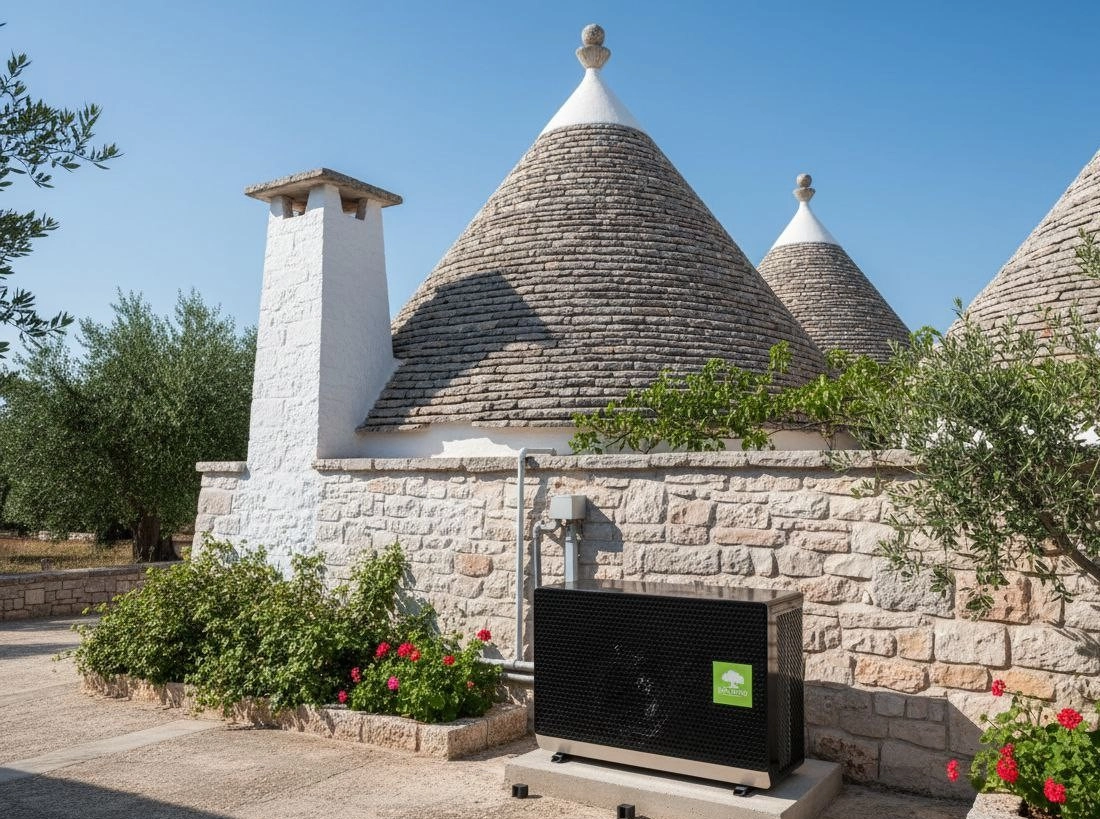
The efficiency of BeeSmart heat pumps with Mitsubishi Electric compressors depends significantly on the operating mode. In W35 mode, the inverter compressor operates in the optimal frequency range of 30–70 Hz, allowing smooth modulation and adaptation to the home’s needs.
In W55 mode, the compressor is forced to operate continuously at high frequencies of 80–90 Hz, approaching its maximum capabilities. At the same time, the R32 refrigerant must be compressed to extreme parameters to reach the high condensation temperature required to heat water to 55°C and above.
Additional reasons for reduced efficiency in W55 mode:
- An increased number of defrost cycles of the outdoor unit due to a lower refrigerant evaporation temperature
- More intensive frost formation on the heat exchanger, further reducing efficiency
- Limited power modulation capability — the compressor is forced to run almost constantly at maximum power
Optimal heating systems for low-temperature mode
To get the most out of BeeSmart heat pumps, low-temperature heating systems are best suited:
- Underfloor heating — operates at 30–40°C, ideal for W35 mode with COP up to 3.27
- Gebläsekonvektor (fan coils) — operate efficiently at 35–45°C
- Large-format low-temperature radiators or an increased number of sections of conventional radiators — allow operation at 35–45°C
Classic old small-area radiators are usually designed for 70–80°C from a gas boiler. For them, the heat pump has to operate in W55 mode, which leads to a 40–50% loss of efficiency.
Hybrid solutions for existing homes with radiator heating
You don’t have to completely refit the house to improve efficiency. BeeSmart heat pumps can control two independent circuits via mixing valves:
- First circuit — underfloor heating or Gebläsekonvektor (fan coils) at 35°C, where the heat pump operates with a COP of 3.27 and delivers most of the heat very economically
- Second circuit — existing radiators at 50–55°C with a COP of about 2.0 as additional heating on the coldest days
The 7-inch EcoTouch touchscreen controller calculates the optimal supply temperature for each circuit separately depending on the outdoor temperature using weather-compensated Smart curve logic. This maximizes the use of the low-temperature circuit with a high COP and minimizes the use of the high-temperature circuit.
Economical operation in extreme cold
The BeeSmart controller has an automatic switchover function to an auxiliary heat source (electric boiler or gas boiler) when the outside temperature drops below a set value, for example, minus 15°C. When the heat pump’s COP falls below 2.0, the system itself compares the current efficiency of the heat pump with the alternative and activates the optimal energy source.
This is especially relevant for high-temperature systems, where in severe frosts the COP can drop to critically low values of 1.4–1.6. The weather-compensated control system constantly optimizes operation, ensuring the highest possible efficiency under any conditions.
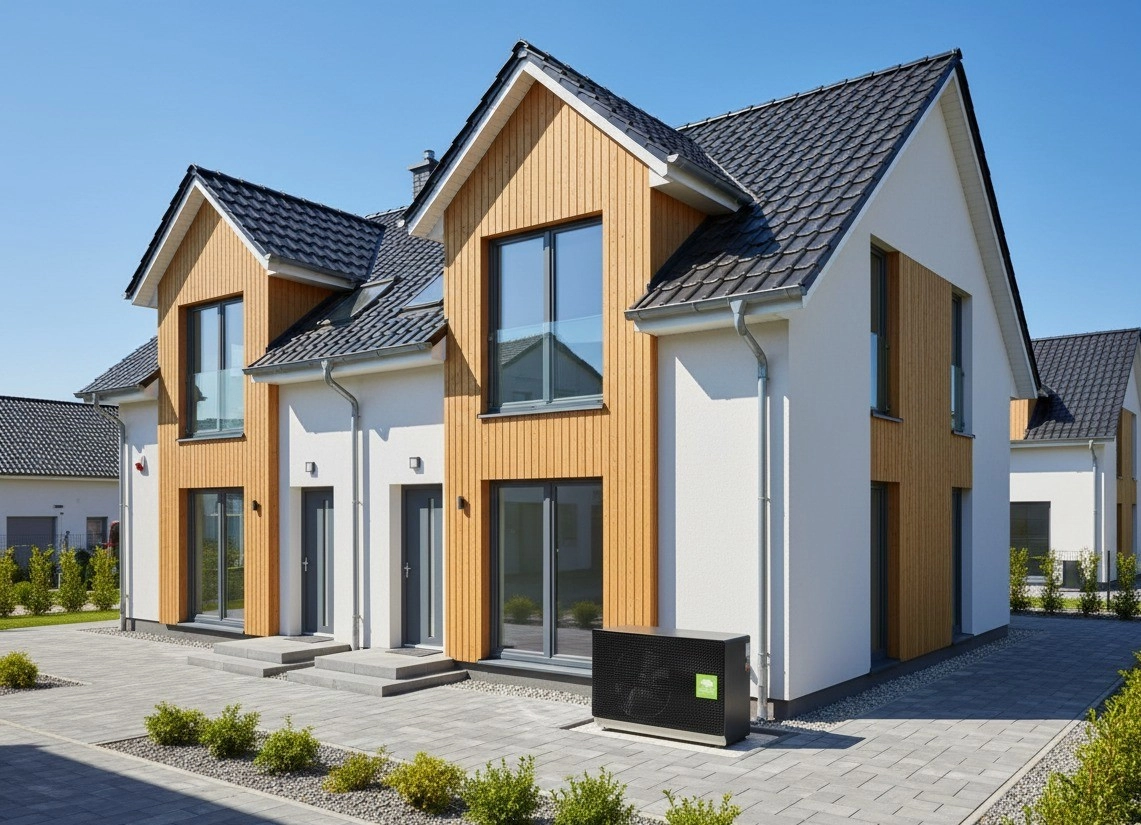
Comparison with other Mycond series
Mycond offers different heat pump series for various needs, and all of them show a significant efficiency difference between W35 and W55 modes:
- BeeEco — monoblock with a Highly compressor, has a maximum supply temperature up to 75°C, operates down to -25°C, class A+++
- BeeThermic — EVI intermediate vapor injection technology, best performance in extreme frosts below -15°C, Panasonic compressor
- MBasic — budget option with a Zhuhai Landa compressor, maximum supply temperature 55°C, operates down to -25°C, class A+++
All series show high efficiency in low-temperature mode, so choosing the right supply temperature is critically important for any Mycond heat pump series.
How to check your heating system in 5 minutes
Use this simple checklist to assess how ready your heating system is for a heat pump:
- Measure the boiler’s supply temperature with a thermometer or a thermal imager on the pipe going to the radiators.
- If the temperature is 50–55°C and the house is comfortable, your system is already close to optimal, and BeeSmart will be able to operate in W45 mode with a COP of around 2.5.
- If the temperature is 60–70°C, you need to either increase the radiator area by 30–50%, add underfloor heating at least in the main rooms, or install Gebläsekonvektor (fan coils).
- If the temperature is above 70°C, the system is designed for an old boiler and needs modernization, because a heat pump in W55 mode will consume too much.
Select a BeeSmart with a 10–15% power margin to cover peak loads. But do not oversize excessively, because an overly powerful pump will short-cycle, which reduces COP and shortens the compressor’s service life.
FAQ: Frequently asked questions about low-temperature vs high-temperature heating
Can a radiator system be converted to low-temperature mode?
Yes, if the radiator area is sufficient. Check this by lowering the boiler temperature to 45°C for a day. If the house remains comfortable, the system is suitable for W35–W45 modes. If it gets cold, you need to add radiator sections or install underfloor heating in the main rooms. Often, increasing the radiator area by 30–50% is enough for efficient operation at a lower supply temperature.
How much electricity does low-temperature mode save?
Consumption decreases by 1.4–1.5 times at -7°C. This is confirmed by BeeSmart performance charts and Heat Pump Keymark certificates according to EN 14825:2022 and EN 14511-4:2022 standards. In practice, with a heat demand of 10 kW, the monthly difference between W35 and W55 modes is about 990 kWh of electricity.
Does BeeSmart work in severe frosts?
Yes, BeeSmart operates down to -25°C outside. At -7°C, the models deliver from 5.7 to 12.6 kW of heat with COP from 2.97 to 3.27 (in W35 mode). This is confirmed by tests at -24°C — successful start and one hour of operation without errors. The system has intelligent defrosting that activates only when needed, further improving efficiency.
Can BeeSmart be combined with a gas or electric boiler?
Yes, a bivalent hybrid system is one of the most efficient solutions. The BeeSmart controller automatically switches to an auxiliary source when the set outdoor temperature is reached and the COP drops below the economical level. This is especially relevant for high-temperature systems, where the heat pump’s efficiency drops significantly in severe frosts.
What is the system’s noise level?
The outdoor unit — from 52 to 61 dBA depending on the model, the indoor unit — 44 dBA. This is quieter than a normal conversation at a distance of 1 meter. The sound pressure at 1 meter ranges from 46 to 55 dBA. The modern, low-vibration design ensures comfortable operation in both urban and suburban settings.
Is a buffer tank required?
Yes, a buffer tank is recommended for all heat pump systems. It reduces the number of compressor on/off cycles, extends its service life, and ensures stable operation of the heating system. The tank also acts as a hydraulic separator between circuits and provides reliable freeze protection.
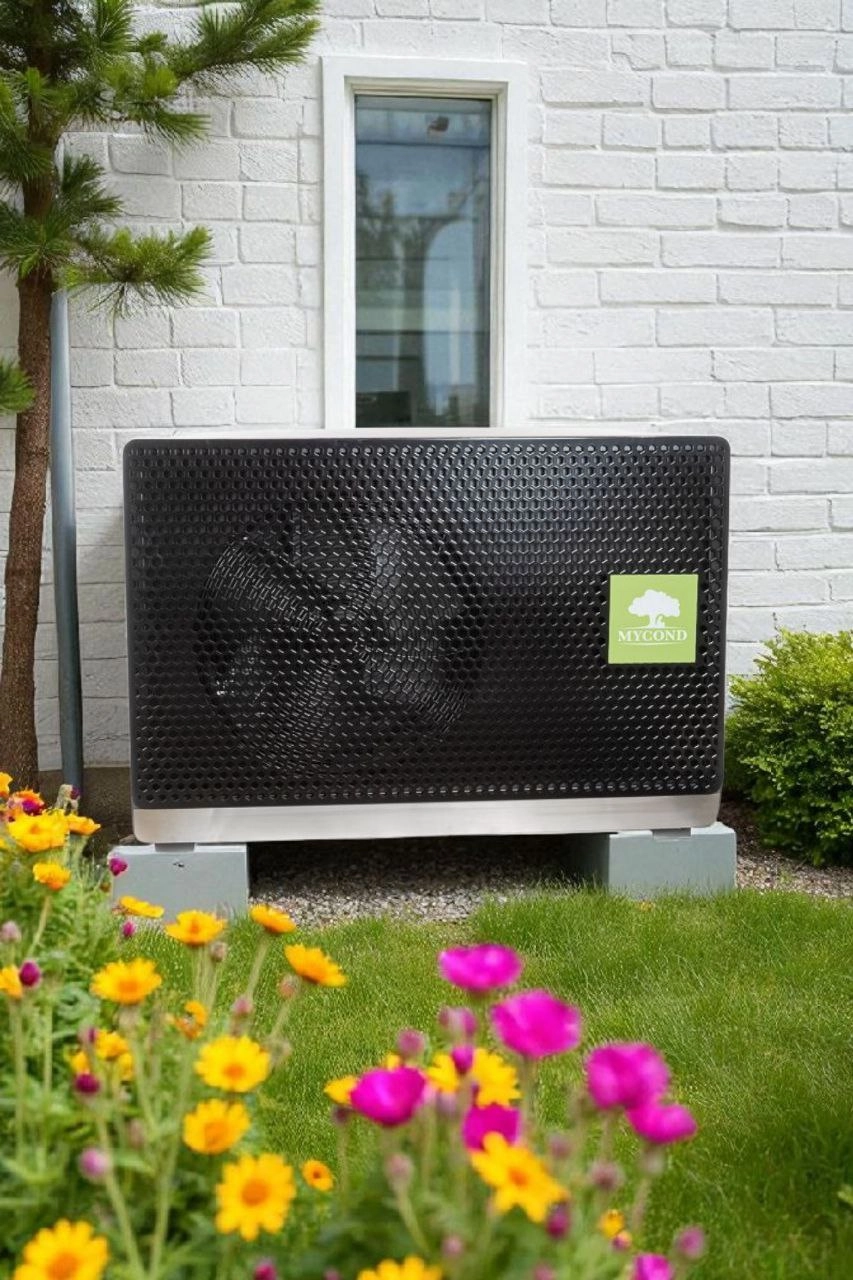
Is there smartphone control?
Yes, there is a Mycond app for iOS and Android that allows you to remotely change temperatures and modes, and view charts and error codes. In addition, the built-in EcoTouch panel with a 7-inch color screen provides convenient on-site control. The system supports weather-compensated control, a weekly timer, and vacation mode.
Is cascade connection possible?
Yes, you can combine up to 16 BeeSmart heat pumps for large sites. There is a Modbus RTU protocol for integration with BMS dispatching systems, the ability to control via 0–10 V signals, and a USB port for firmware updates. This allows scalable solutions for projects of any complexity.
Contact us to find the optimal solution
To use a BeeSmart heat pump as efficiently as possible, it’s important to select the right model and optimize the heating system. Contact us for professional advice and selection of the optimal BeeSmart model for your heating system.